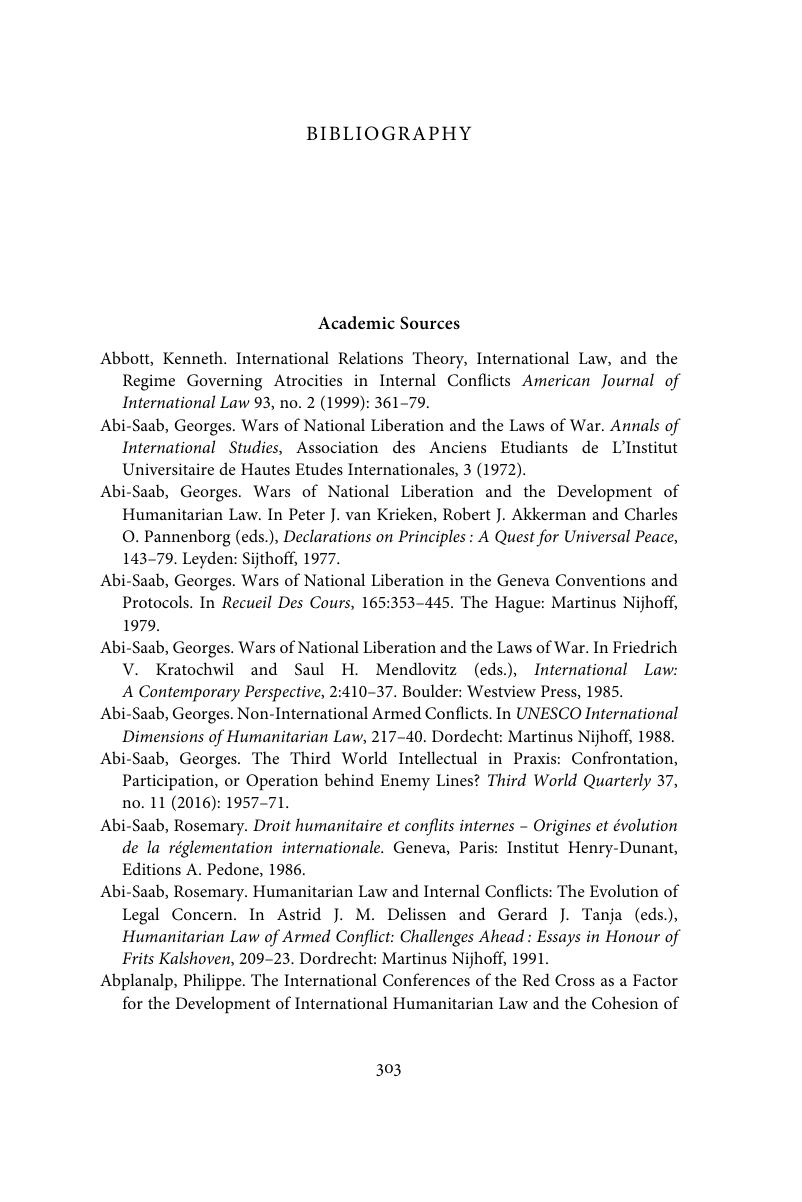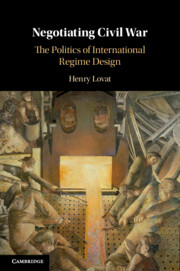Book contents
- Negotiating Civil War
- Negotiating Civil War
- Copyright page
- Dedication
- Contents
- Figures
- Acknowledgements
- Introduction
- 1 Theorising the Civil War Regime
- 2 Historical Precursors and Regime Origins
- 3 Negotiating Common Article 3 (1949)
- 4 The Additional Protocols of 1977
- 5 War Crimes and Internal Armed Conflict in the Rome Statute (1998)
- 6 Explaining the Civil War Regime
- Conclusion
- Bibliography
- Index
- References
Bibliography
Published online by Cambridge University Press: 17 August 2020
- Negotiating Civil War
- Negotiating Civil War
- Copyright page
- Dedication
- Contents
- Figures
- Acknowledgements
- Introduction
- 1 Theorising the Civil War Regime
- 2 Historical Precursors and Regime Origins
- 3 Negotiating Common Article 3 (1949)
- 4 The Additional Protocols of 1977
- 5 War Crimes and Internal Armed Conflict in the Rome Statute (1998)
- 6 Explaining the Civil War Regime
- Conclusion
- Bibliography
- Index
- References
Summary

- Type
- Chapter
- Information
- Negotiating Civil WarThe Politics of International Regime Design, pp. 303 - 356Publisher: Cambridge University PressPrint publication year: 2020

